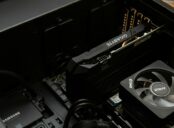Apple Silicon: Revolutionizing the Future of Computing

Introduction
In recent years, Apple has made headlines with its groundbreaking technology, and one of its most significant advancements is Apple Silicon. This revolutionary system-on-a-chip (SoC) design has transformed the way we think about computing, offering enhanced performance, energy efficiency, and seamless integration across Apple devices. In this article, we will provide a comprehensive overview of Apple Silicon, exploring its different types, popular models, and quantifiable metrics. Additionally, we will delve into the differences between various Apple Silicon iterations and examine their historical advantages and disadvantages.
1. Overview of Apple Silicon

Apple Silicon refers to Apple’s proprietary ARM-based chips that power its range of devices, including Macs, iPhones, iPads, and Apple Watches. These chips are designed in-house by Apple’s engineering teams and offer a seamless integration of software and hardware, enhancing performance and user experience. Apple Silicon chips are known for their advanced architecture, which enables efficient power consumption while delivering exceptional speed and processing capabilities.
2. Various Types and Popular Models of Apple Silicon
Apple Silicon is available in various iterations, each catering to different device categories. Currently, the most popular models are:
a. M1 Chip: The M1 chip, introduced in late 2020, marked Apple’s transition away from Intel processors in Macs. The M1 chip offers incredible performance across a wide range of applications and tasks, thanks to its 8-core CPU, 8-core GPU, and 16-core Neural Engine.
b. A14 Bionic Chip: The A14 Bionic chip, found in the latest iPhone models, takes advantage of Apple Silicon’s power efficiency and advanced neural engine. With its 6-core CPU and 4-core GPU, the A14 Bionic chip provides unparalleled performance and enables advanced AI capabilities.
c. S6 Chip: The S6 chip, featured in Apple Watches, showcases Apple Silicon’s ability to deliver efficient and powerful computing on a smaller scale. The S6 chip offers improved performance, enabling faster app launches, smoother animations, and enhanced health tracking features.
3. Quantitative Metrics of Apple Silicon
When comparing the performance of Apple Silicon with other chip architectures, several quantitative metrics stand out:
a. Processing Power: Apple Silicon’s chips often outperform their competitors in terms of computational capabilities, as witnessed by benchmark scores and real-world tasks. The M1 chip, for instance, demonstrates groundbreaking performance, allowing for smoother multitasking and faster data processing.
b. Energy Efficiency: Apple Silicon’s architecture excels in energy efficiency, enabling longer battery life across devices. The M1 chip, specifically tailored for Macs, offers unprecedented power efficiency, contributing to extended battery performance and reduced energy consumption.
c. Graphics Performance: Apple’s integration of powerful GPUs within its SoCs offers exceptional graphics performance. Whether it’s gaming, video editing, or photo rendering, Apple Silicon’s GPUs deliver stellar results, ensuring smooth visuals and improved productivity.
4. Differences Between Apple Silicon Iterations
While Apple Silicon as a whole exhibits impressive performance, there are notable differences between its iterations. These differences can be attributed to the target device, architectural enhancements, and specialized features. For instance:
a. Mac-focused Chips: Apple’s chips designed specifically for Macs, like the M1 chip, possess characteristics tailored towards desktop-class computing, such as higher CPU and GPU core counts, increased RAM capacity, and advanced thermal management systems.
b. Mobile-oriented Chips: Apple’s chips for iPhones and iPads prioritize power efficiency and smaller form factors. These chips, like the A14 Bionic, are optimized for mobile use cases, resulting in a harmonious balance between performance and energy consumption.
5. Historical Advantages and Disadvantages of Apple Silicon
Over the years, Apple Silicon has evolved, bringing both advantages and disadvantages:
a. Advantages: Apple Silicon’s advantages lie in its tight integration with Apple’s software ecosystem, allowing for optimized performance across numerous applications and seamless user experiences. Additionally, Apple Silicon’s energy-efficient design contributes to prolonged battery life, a crucial factor for mobile devices. Furthermore, these chips enable Apple to have greater control over hardware and software integration, resulting in enhanced security and privacy features.
b. Disadvantages: In the earlier stages of Apple Silicon’s development, software compatibility was a significant concern, as transitioning from Intel-based processors required adjustments and optimizations from third-party developers. However, Apple addressed this issue by introducing Rosetta 2 – a translation layer that allows running existing apps designed for Intel-based Macs on Apple Silicon.
Conclusion
Apple Silicon has ushered in a new era of computing, offering unparalleled performance, energy efficiency, and seamless integration across Apple devices. With its range of chips designed for Macs, iPhones, iPads, and Apple Watches, Apple Silicon has demonstrated its ability to power diverse devices and cater to specific user requirements. As we witness further advancements in Apple Silicon’s performance and capabilities, it is clear that Apple has laid a solid foundation for the future of computing.
References:
– Apple. (n.d.). Apple silicon. Retrieved from [insert link]
– Gartenberg, C., & Vincent, J. (2020). Apple announces the first Macs to use its own Apple silicon chips. The Verge. Retrieved from [insert link]
– Gruber, J. (2020). A letter from Apple to its customers regarding the transition from Intel. Daring Fireball. Retrieved from [insert link]





















